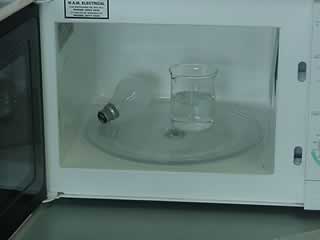
There are two ways of producing light, incandescence which involves the vibration of the entire atom and luminescence which involves only the electrons of the atom.
Incandescent light is produced when atoms are heated and vibrate vigorously releasing some of this vibration as electromagnetic radiation in the form of photons (light). Fire and non-fluorescent light bulbs are common examples of this form of light.
The colour of the incadescent light depends, largely, on the temperature of the material being heated. At very low temperatures the material releases low energy invisible radiation, such as infrared radiation. At higher temperatures colours range from red, through to yellow and eventually white hot as temperatures increase.

Luminescent light occurs at much lower temperatures than incandescent light. Luminescent light is produced when, only the electrons of an atom, as opposed to the entire atom, absorb energy and release it as electromagnetic radiation, usually as light. This is explained below.
Hence, in order to produce continuous luminescent light, a constant source of energy is required to boost the electrons to a higher energy level. This energy source may be provided by various sources such as electrical current as in florescent and neon lights.

Electrons absorb the energy supplied to them and jump from a low energy state called, ground state, to a higher energy level. This makes the atom very unstable and the electron can not sustain this and gives off the energy it has absorbed in the form of light. After its release of energy the electron returns to its original energy level.
Depending on how much energy was absorbed we end up with different colours. Atoms have distinct colours. We can identify the atoms by the colour. For example, copper gives a brilliant green colour while lithium gives a bright red.

Click to see a 420kb movie of the flame test for copper. Click to see a 420kb movie of the flame test for lithium.
Energy can be absorbed by the electrons in many different forms. Heat is not the only energy available to us, microwaves are a very powerful source of energy. Electrons absorb energy in the form of microwaves to produce a very spectacular display of light. Try the demonstration outlined below. Children should e bcarefully supervised by an adult.
DANGER items placed in the microwave can become extremely hot. Do not repeat the activities shown here.
Place a cup of water and a burnt light globe in the microwave. Set the timer for 15 seconds on high.
The burnt light globe actually lights up as the microwaves bombard the metal filament.
Knowing that this is an example of incandescence explain how light is created from a burnt out light globe.

Click
to see a 120Kb video of the light globe.
Click to see a 120Kb video of steel
wool in a microwave oven.
